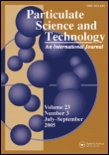
PARTICULATE SCIENCE AND TECHNOLOGY
Scope & Guideline
Pioneering Knowledge in Particulate Science
Introduction
Aims and Scopes
- Particle Characterization and Modeling:
This area includes studies on the physical and chemical properties of particles, employing various techniques such as CFD, DEM, and image analysis to understand particle behavior and interaction in different environments. - Separation and Filtration Technologies:
Research in this scope focuses on innovative methods for separating and filtering particulate materials, including electrostatic, magnetic, and mechanical approaches, aimed at enhancing efficiency and effectiveness in industrial applications. - Nanoparticle Synthesis and Applications:
The journal publishes works on the synthesis of nanoparticles using various methods, including green synthesis, and their applications in fields such as medicine, environmental remediation, and catalysis. - Fluidization and Pneumatic Conveying:
This research area investigates the dynamics of fluidized beds and pneumatic conveying systems, focusing on the behavior of particles under various flow conditions, which is crucial for optimizing industrial processes. - Environmental and Energy Applications:
Studies addressing the impact of particulate materials on environmental health and energy efficiency, including waste management and the development of sustainable technologies, are a significant focus. - Tribology and Wear Performance:
This scope examines the interactions between particles and surfaces, particularly in terms of wear and friction, to improve material performance in various applications.
Trending and Emerging
- Green Synthesis of Nanomaterials:
There is a growing emphasis on environmentally friendly methods for synthesizing nanoparticles, reflecting a broader trend towards sustainability in nanotechnology and materials science. - Advanced Computational Modeling:
The use of sophisticated computational models, such as CFD-DEM simulations, is on the rise, allowing for more accurate predictions of particle dynamics and interactions in complex systems. - Biomaterials and Biomedical Applications:
Research focusing on the use of particulate materials in biomedical applications, including drug delivery systems and tissue engineering, is gaining traction, reflecting the increasing intersection between materials science and health care. - Smart Materials and Responsive Systems:
Emerging studies on smart materials that respond to environmental stimuli (e.g., temperature, pH) are becoming more prevalent, showcasing innovation in material design for various applications. - Waste-to-Value Technologies:
There is a noticeable increase in research addressing the conversion of waste materials into valuable products, emphasizing the importance of circular economy principles in particulate technology. - Energy-efficient Separation Processes:
Research into energy-efficient and sustainable separation processes, particularly in the context of industrial applications, is becoming increasingly important as industries strive to reduce their environmental footprint.
Declining or Waning
- Traditional Material Processing Methods:
There appears to be a waning interest in conventional material processing techniques, such as basic milling and grinding, as researchers increasingly explore more innovative and sustainable methods like nanotechnology and advanced filtration systems. - Basic Characterization Techniques:
As the field advances, there is a noticeable decline in publications focusing solely on basic characterization techniques without integrating advanced methodologies like machine learning or high-throughput screening. - Single-Use or Low-Efficiency Processes:
Research on single-use processes or those with low efficiency is decreasing, as the industry and academia shift towards more sustainable and efficient processes, particularly in waste management and resource recovery. - Heuristic Models in Particle Behavior:
There seems to be a decline in the use of traditional heuristic models for predicting particle behavior, with a growing preference for data-driven approaches and simulations that provide more accurate and reliable results.
Similar Journals
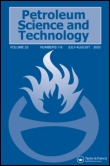
PETROLEUM SCIENCE AND TECHNOLOGY
Advancing the frontiers of petroleum research.PETROLEUM SCIENCE AND TECHNOLOGY, published by Taylor & Francis Inc, is a pivotal journal dedicated to advancing the multidisciplinary field of petroleum engineering and related technologies. With an ISSN of 1091-6466 and an E-ISSN of 1532-2459, this journal serves as a vital platform for disseminating research in areas ranging from geotechnical engineering to energy technology. As of 2023, it is recognized in the Q3 quartile across several categories, including Chemical Engineering and Fuel Technology, signifying its respectable standing within the academic community. With a convergence timeline from 1997 to 2024, the journal continuously addresses crucial issues in the energy sector, making it essential reading for researchers, industry professionals, and policy-makers alike. Although not an open access journal, its rigorous peer-reviewed articles contribute significantly to the advancement of knowledge and innovation within these fields, reflecting the journal's commitment to promoting scientific understanding and practical applications.

Lubricants
Advancing lubrication technology for a sustainable future.Lubricants, published by MDPI, is a prestigious, peer-reviewed open-access journal that has been dedicated to advancing the field of lubrication technology since its launch in 2013. With its E-ISSN of 2075-4442, the journal is based in Switzerland and has rapidly established itself as a vital resource in the domains of Mechanical Engineering and Materials Science, achieving Q2 quartile rankings in both fields as of 2023. Lubricants provides a platform for the dissemination of innovative research, offering insights into the performance, formulation, and applications of lubricants across various industries. With a commitment to fostering collaboration and knowledge-sharing, this journal attracts a global audience of researchers, professionals, and students eager to explore the latest developments in lubrication technologies. Open access since its inception, Lubricants ensures that all published works are freely available, promoting greater visibility and accessibility of cutting-edge research in the field.
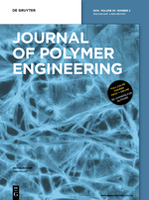
JOURNAL OF POLYMER ENGINEERING
Connecting Ideas for a Sustainable Polymer Future.JOURNAL OF POLYMER ENGINEERING, published by Walter de Gruyter GmbH, stands as a pivotal platform in the field of polymer science and engineering. With an ISSN of 0334-6447 and an E-ISSN of 2191-0340, this journal has been a vital contributor to the academic landscape since its inception, spanning publications from 1981 to 2024. As a recognized entity in the realms of Chemical Engineering, Materials Chemistry, and Polymers and Plastics, it holds a respectable position in Q3 quartile rankings according to the latest assessments. The journal is positioned to promote the exchange of cutting-edge research findings, technological advancements, and critical reviews that address the complexities of polymer application and innovation. Researchers and professionals will find a wealth of information, from experimental methodologies to theoretical analyses, all designed to inspire and elevate the current understanding of polymer engineering. By fostering collaboration and dissemination of knowledge, the JOURNAL OF POLYMER ENGINEERING remains crucial for advancing research and education in its specialized domains.

JOURNAL OF SUPERCRITICAL FLUIDS
Leading the Charge in Supercritical Fluid TechnologyThe JOURNAL OF SUPERCRITICAL FLUIDS, publishing since 1988 and represented by Elsevier, stands as a pivotal platform for research in the dynamic fields of chemical engineering, condensed matter physics, and physical and theoretical chemistry. Located in the Netherlands, this esteemed journal focuses on the development and application of supercritical fluid technology, exploring its implications across diverse scientific disciplines. With impressive rankings, including Q2 in multiple categories, the journal reflects a strong commitment to advancing knowledge and innovation, thereby establishing its significant impact in the scientific community. Though not an open-access publication, it provides options for authors to ensure the visibility and reach of their work, appealing to researchers, professionals, and students alike. The JOURNAL OF SUPERCRITICAL FLUIDS continues to be a crucial resource for those dedicated to enhancing the understanding of supercritical fluid phenomena, fostering collaboration and inspiration among academics and practitioners worldwide.
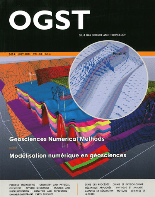
Oil & Gas Science and Technology-Revue d IFP Energies nouvelles
Transforming Knowledge into Energy SolutionsOil & Gas Science and Technology - Revue d'IFP Energies nouvelles, published by EDP SCIENCES S A, is a distinguished journal in the field of energy science, specifically focusing on the latest advancements in oil and gas technologies. Since its transition to Open Access in 1997, the journal has been dedicated to disseminating high-quality research that addresses the challenges and innovations inherent in energy engineering and fuels. With an ISSN of 1294-4475 and an E-ISSN of 1953-8189, this journal holds a significant position in academic circles, reflecting its contributions to sustainable energy solutions. The journal's rankings in Scopus showcase its impact, particularly in the areas of Energy Engineering and Power Technology (Rank #105/224), Chemical Engineering (Rank #131/279), and Fuel Technology (Rank #51/100). As a pivotal resource for researchers, professionals, and students, it aims to foster knowledge exchange and promote innovative technologies essential for the ongoing evolution of the energy sector.

TRANSACTIONS OF TIANJIN UNIVERSITY
Exploring innovative solutions through collaborative inquiry.TRANSACTIONS OF TIANJIN UNIVERSITY, published by SpringerNature, is a premier journal in the field of multidisciplinary research, boasting an impressive Q1 ranking and placing within the top 93rd percentile of its category according to Scopus. With an ISSN of 1006-4982 and E-ISSN of 1995-8196, this journal facilitates insightful and innovative contributions that span various disciplines, making it a vital resource for academics and professionals alike. Established in 2004, the journal continues to thrive with a commitment to advancing knowledge and fostering collaboration in scientific inquiry. TRANSACTIONS OF TIANJIN UNIVERSITY aligns with global research trends and offers a platform for the dissemination of high-quality research findings, promoting interdisciplinary approaches to solving complex problems. Located in China, its influence extends well beyond national borders, appealing to a diverse readership eager to explore the latest advancements and discussions in the multidisciplinary arena.

JOURNAL OF CHEMICAL ENGINEERING OF JAPAN
Illuminating Pathways for Future Chemical DiscoveriesJOURNAL OF CHEMICAL ENGINEERING OF JAPAN is a distinguished academic publication in the field of chemical engineering and chemistry, published by Taylor & Francis Ltd. With its ISSN 0021-9592 and E-ISSN 1881-1299, this journal has been a vital resource for researchers and practitioners since its inception in 1968 and continues to provide essential insights and advancements through 2024. The journal operates under an Open Access model as of 2023, promoting wider dissemination of research findings and encouraging collaboration within the global scientific community. Currently categorized in the Q4 quartile for both Chemical Engineering and Chemistry (miscellaneous) in 2023, it ranks within the lower percentiles of its respective fields, offering a platform for emerging scholars to publish their work and gain visibility. As part of Japan's academic landscape, it addresses numerous aspects of chemical engineering, fostering innovation and technical development that contribute to the industry's growth. Engaging with this journal is paramount for those looking to stay informed on the latest research trends and applications in chemical processes.

Computational Particle Mechanics
Fostering Interdisciplinary Insights in Computational ScienceComputational Particle Mechanics, published by SPRINGER INTERNATIONAL PUBLISHING AG, is a leading journal dedicated to advancing knowledge in the interdisciplinary fields of computational mechanics, civil engineering, and fluid dynamics. With an impressive impact factor reflecting its high-quality research publications, this journal maintains a strong presence in the academic community with a Q1 ranking in categories such as Civil and Structural Engineering, Computational Mechanics, and Numerical Analysis as per the latest 2023 evaluations. Researchers and professionals benefit from the journal's commitment to open-access options, promoting wider dissemination of groundbreaking studies. Operating under the Swiss publishing house since 2014, Computational Particle Mechanics aims to foster innovation through the exploration of particle-based methods and simulations, making significant contributions to methodologies within computational mathematics and modeling. As the journal continues to evolve until its converged years end in 2024, it stands as a vital resource for those looking to enhance their expertise in dynamic modeling and simulation techniques.
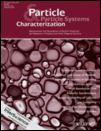
PARTICLE & PARTICLE SYSTEMS CHARACTERIZATION
Advancing Understanding of Particle DynamicsPARTICLE & PARTICLE SYSTEMS CHARACTERIZATION is a distinguished journal dedicated to advancing the knowledge within the fields of Chemistry, Condensed Matter Physics, and Materials Science. Published by WILEY-V C H VERLAG GMBH in Germany, this journal has established a solid reputation since its inception in 1984, showcasing research aimed at understanding the intricate properties and behaviors of particulate systems. With an impressive Q2 ranking in its respective categories and Scopus ranks indicating a robust standing in the global research community, it serves as an essential resource for researchers, professionals, and students. Although it does not currently offer Open Access options, its comprehensive articles and reviews provide valuable insights that contribute significantly to the ongoing discourse in these scientific domains. As it prepares to celebrate four decades of publication, PARTICLE & PARTICLE SYSTEMS CHARACTERIZATION continues to provide a vital platform for emerging knowledge, fostering innovation and collaboration among scientists dedicated to the study of particle systems.
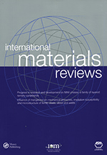
INTERNATIONAL MATERIALS REVIEWS
Connecting Theory and Practice in Materials EngineeringINTERNATIONAL MATERIALS REVIEWS, published by SAGE Publications Inc, is a leading journal dedicated to the comprehensive analysis of contemporary research in the fields of materials chemistry, mechanical engineering, mechanics of materials, and the study of metals and alloys. With an impressive impact factor and a Q1 ranking across multiple categories such as Materials Chemistry and Mechanical Engineering in 2023, it ranks amongst the top journals for innovative materials research. The journal has a long-standing history since its inception in 1987 and continues to serve as a crucial resource for academics and professionals alike. Although it is not open access, it is renowned for its rigorous peer-review process and its commitment to disseminating high-quality materials science research globally. Researchers, students, and industry professionals benefit greatly from the journal's insightful reviews, both for the advancement of theoretical knowledge and practical applications within the fast-evolving materials field.